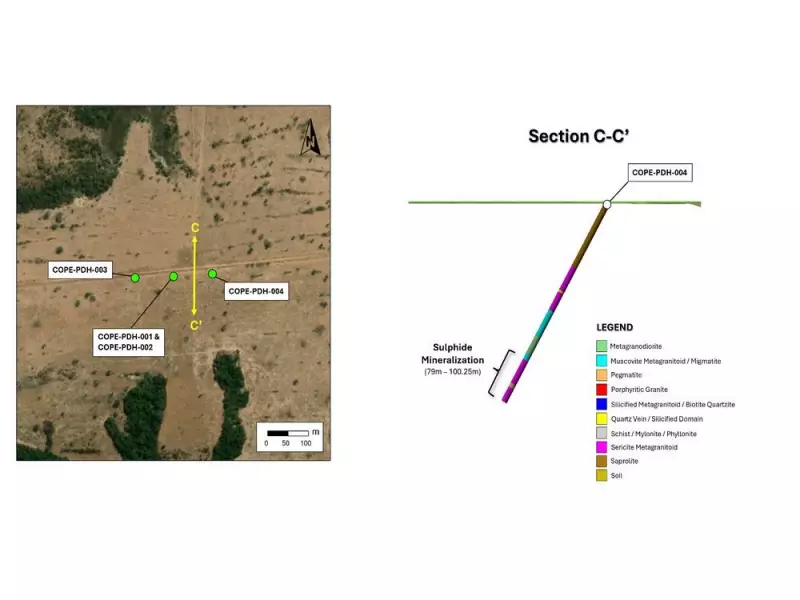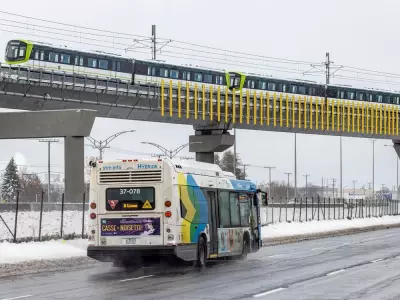
VANCOUVER - GoldHaven Resources Corp. has made a significant exploration breakthrough at its wholly-owned Copecal Gold Project in Brazil, with diamond drilling intersecting sulphide mineralization in the fourth hole of its ongoing program.
Drilling Program Delivers Promising Results
The Vancouver-based mining company revealed that drill hole COP-004 encountered disseminated sulphide mineralization consisting of fine-grained pyrite and chalcopyrite from 79 meters depth through to the end of the hole at 100.25 meters. This mineralization appears within a sheared medium-grained biotite granitoid rock formation accompanied by weak to moderate phyllic alteration characterized by quartz, muscovite-sericite, and calcite.
This discovery marks the first tangible evidence of potential mineralization that could explain the anomalous gold-in-soil samples previously identified at the East Target area. The significance of this finding is amplified by the fact that the drill hole ended while still in mineralized ground, prompting plans for immediate follow-up drilling to test the depth extension of this promising zone.
Exploration Progress and Next Steps
GoldHaven's current diamond drilling program totals 1,200 meters designed specifically to test key gold-in-soil anomalies and geophysical targets. To date, the company has completed six diamond drill holes totaling 687.4 meters, with 441.7 meters drilled across four holes at the East Target and 245.7 meters across two holes at the West Target.
The exploration campaign continues to advance with the seventh hole, COP-007, currently in progress. An eighth hole has already been laid out and prepared for drilling at the West Target, while a ninth hole is being planned specifically to follow up on the mineralization intersected in hole COP-004 at the East Target.
Geological Context and Assay Results
While partial assay results from the initial reconnaissance holes COP-001 and COP-002 did not return results of potential economic interest, they have provided valuable geochemical and structural insights for the East Target area. The company noted that these first two holes, while intersecting sheared and altered rock, showed no evidence of associated sulphide mineralization.
GoldHaven emphasized that assay results from the saprolite portion of these early holes are still pending. The company plans to continue integrating geological, structural, and geochemical data over the coming weeks to refine targeting along both the East and West anomalies as the drilling program progresses.
The intersection of sulphide mineralization represents a crucial milestone for GoldHaven's Brazilian exploration efforts, providing concrete evidence that could potentially lead to the discovery of a significant gold system at the Copecal Project.




